A while back, I noticed that Jenny of LGN was growing a citrus tree right in her NYC apartment. And I thought it was brilliant. We don’t have much room on our property for fruit trees but there’s something about producing your own cooking accoutrements (delicious thyme and rosemary and dill) that is so appealing. Lemons fall into that category for me. They can be found in nearly every dish, from fresh fish to a salad dressing to a cold glass of iced tea, and so I decided to give indoor gardening a go. Our little herb garden on the side of the house will produce the seasoning for daily meals, and now perhaps my indoor fruit tree will provide several lemons to give us juice on a semi-regular basis.
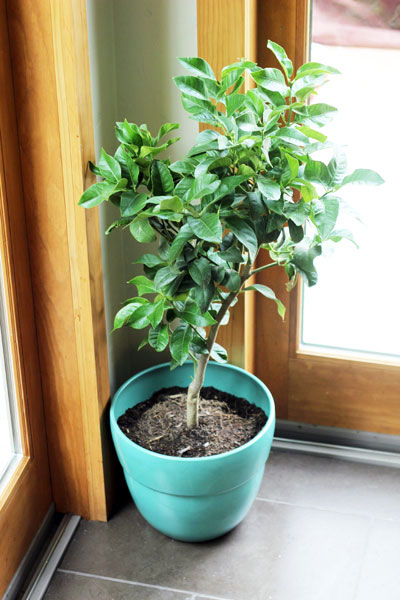
Worst case it becomes a pretty green addition for the kitchen. Of course when he gets too big (though he is a dwarf lemon) I’ll have to transplant him into a large pot on the future deck. But for now, my little lemon tree has found the perfect spot to flourish.
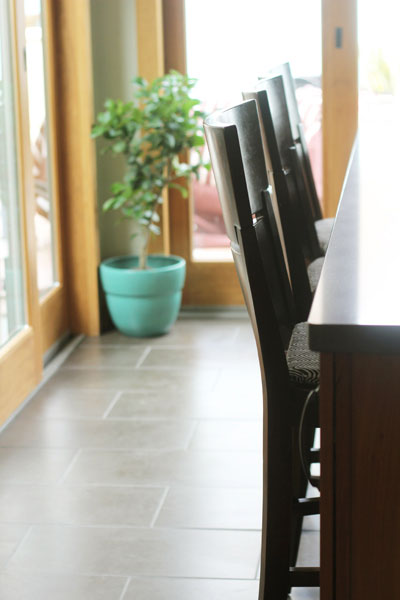
I’ll keep you updated on the success of indoor fruit harvesting. Back when I was in grade school I attempted this with a tomato plant and produced little cherry tomatoes year round by placing it at the corner of two bright windows. Will lemons act the same I wonder?
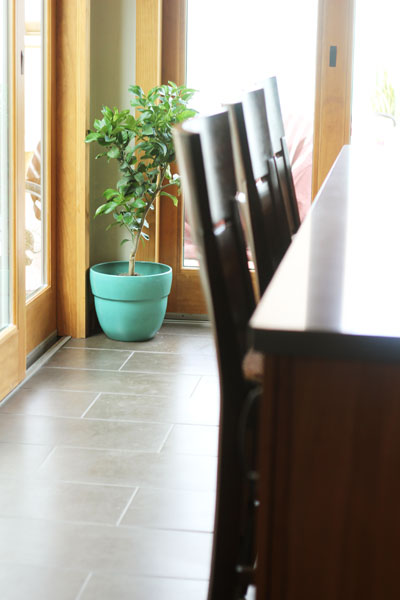
I have become mildly obsessed with houseplants of late. Trees for various rooms and beautiful crawling vines for the tops of bookshelves. The added greenery and life brings energy to a space – an organic vibe that I am really drawn to at the moment.

This lemon tree is just what the kitchen ordered. I chose a dwarf Eureka lemon, mostly because I thought it was much prettier than the Meyer up close (which was my original plan) and would be a tad more attractive as an indoor varietal.
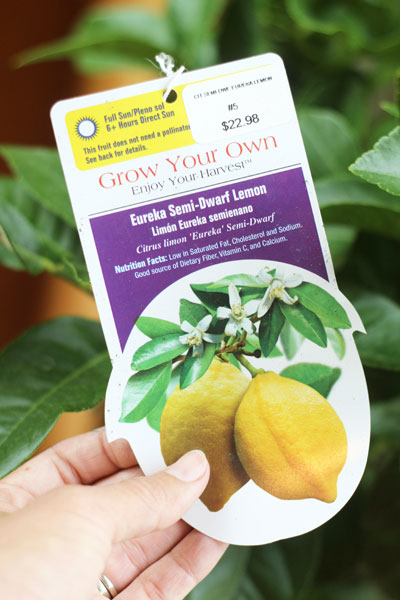
Here’s what I’ve learned about the two common types: Eureka’s are “true” lemons while Meyer’s are actually a hybrid, whose origin is unknown but is believed to be a cross between a lemon and a mandarin orange or orange. Eureka’s have fewer seeds but their lemons are a tad more acidic. Eureka’s blossom with full white blooms in mid spring and offer a winter harvesting period which lengthens as the tree ages. I should expect fruit now (the plant is roughly 2-3 years old) but it will continue to get fuller as it gets older. I can keep him a dwarf with regular pruning and should be able to easily control the span and size, though it definitely will not need a new pot for at least a year. Should I attempt this again in the future I’ll probably seek out true dwarf rather than a semi-dwarf, but I didn’t really learn the difference until Googling post-purchase. :)
I’ve placed him next to the sliding glass doors so that on especially bright days I can pull him outside and into direct (rather than window-muted) sun.
Here’s a reminder of our kitchen remodel so you can see the amount of light that this space gets on a regular basis:

I love love my turquoise pot (a find from Lowe’s) and I might fill in that showing dirt with a thin layer of lime green moss. Sort of like this example from Martha.
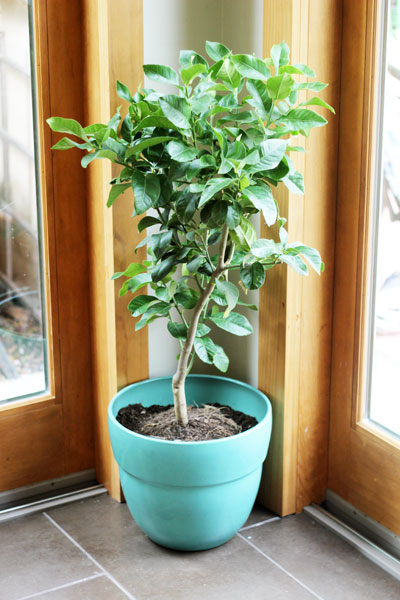
I’ve been watching closely for several weeks now at the brand new green leafy clumps that are stretching out of the branches, and just as we were leaving town this week I noticed my first little bud. The sign of new life. And it could not have peeked out at me at a better time.
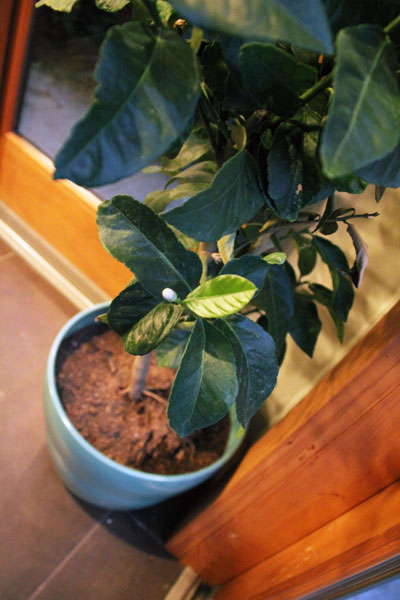
To be continued when the first little green-yellow ball takes shape… more tips on indoor citrus gardening from Jenny here, she highly recommends Calamondin orange trees and shares plenty of pretty inspiration.


